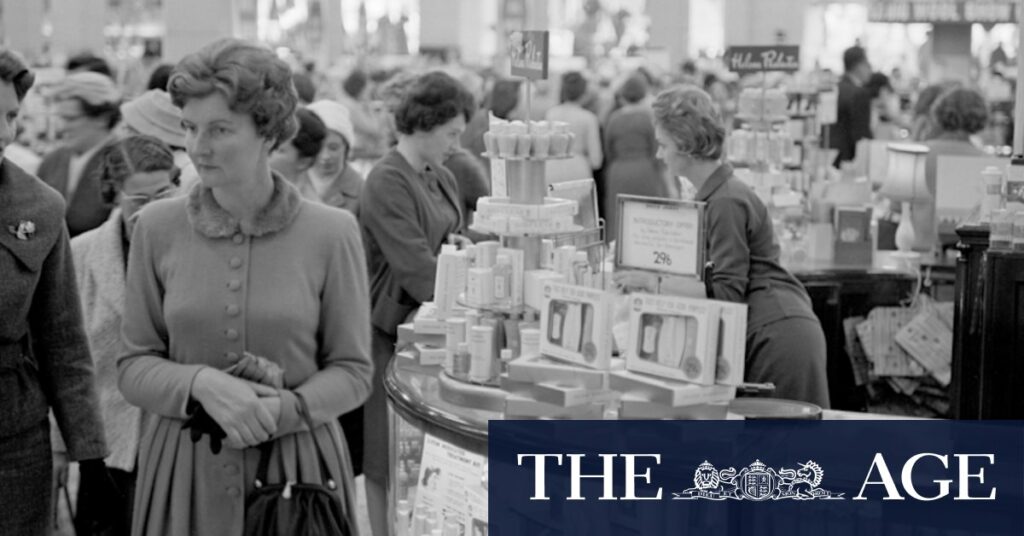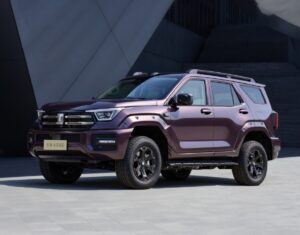
In the 1940s, Miranda Cole’s grandmother would leave her fur coat in the cloakroom of Myer in Bourke Street, Melbourne while she shopped. Years later, carrying forward the family’s loyalty, Miranda Cole’s mother took her and her sisters to the store for special occasions. It was the early 1960s, and the girls wore pretty dresses with stiffened petticoats and gloves. In the Myer Mural Hall, they enjoyed high tea. “It was very exciting, but our behaviour had to be impeccable for this treat,” Cole recalls. These memories are emblematic of the deep-rooted cultural significance department stores once held in Australia.
However, the landscape has dramatically shifted. As the world has changed, the mystique and magic of department stores have ebbed away. At the premium end, only David Jones and Myer survive, facing an uncertain future amid the online-shopping revolution and changing consumer habits. The challenge now is how these iconic stores can woo younger customers who are more inclined towards digital experiences.
The Changing Retail Landscape
The past two decades have been particularly challenging for Myer and David Jones. The global financial crisis, the pandemic, and the cost-of-living crisis have transformed consumer habits. Notably, the rise of online shopping has significantly impacted their business models. Multiple stores have closed, and floor space has been reduced.
Paul Zahra, CEO of David Jones from 2010 to 2014, highlights this as a global issue. “Department stores have been structurally challenged around the world. They’re having to rethink their physical footprint, invest heavily in digital to remain relevant, and rethink their value proposition.”
Revamping Loyalty Programs
In the past, customer loyalty was built on exceptional, personal service. Today, Myer and David Jones are banking on digital loyalty programs. Myer’s loyalty program, Myer One, is set for a relaunch, aiming to integrate the newly acquired Apparel Brands outlets into its network. Meanwhile, David Jones has launched its first-ever points-based loyalty program, David Jones Rewards, in partnership with Qantas Frequent Flyer.
“We want to create warm connections, and we want to drive customer lifetime value, but most of all, we want to drive loyalty,” says David Jones CEO Scott Fyfe.
Fashion and Beauty: The Next Frontier
Fashion has always been central to the department store mission. David Jones has historically been a tastemaker in Sydney’s department store landscape. However, the competition is fierce, with brands like Uniqlo and Cos offering fashionable items at a fraction of the price.
Beauty is another area where both stores see potential. Myer’s Olivia Wirth notes that beauty services are “next-level” in overseas department stores. “Younger customers want to be able to test the product, do it with their friends; so what is the sort of space that you want there?” she asks.
“More than 80 per cent of Gen Z prioritises real-world experiences over digital ones. Department stores need to offer the wow factor,” says fashion journalist Patty Huntington.
Competing with Specialty Retailers
Both Myer and David Jones are closely watching competitors like Mecca, which has opened a flagship megastore in Melbourne’s Bourke Street mall, billed as “the most spectacular beauty store on earth.” This new store includes salons, a high-tech skin clinic, and even an in-house naturopath, a stark contrast to the traditional department store model.
Looking Ahead: Opportunities and Challenges
Despite the challenges, both Myer and David Jones see opportunities in adapting to new consumer trends. Scott Fyfe envisions flagship David Jones stores in key locations, while Olivia Wirth emphasizes the need to reimagine store formats to attract a broader customer base.
One potential outcome, as suggested by market analysts, could be a merger of the two stores, given their shrinking relevance. However, for now, loyal customers remain, and both companies are committed to evolving their strategies to stay relevant in the modern retail landscape.
As these iconic stores navigate the complexities of the current retail environment, they continue to hold a special place in the hearts of many Australians, who cherish their memories of shopping experiences that were once a significant part of their lives.




